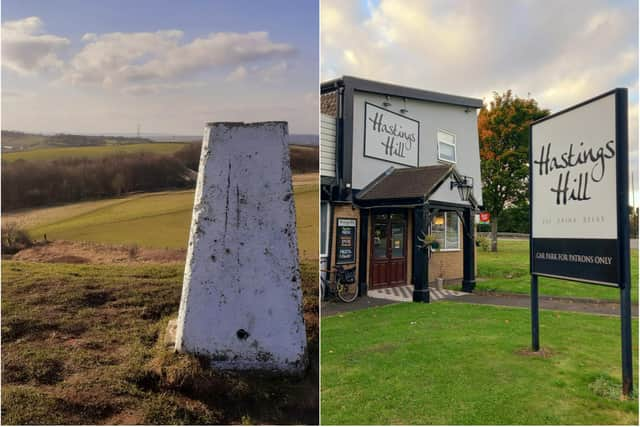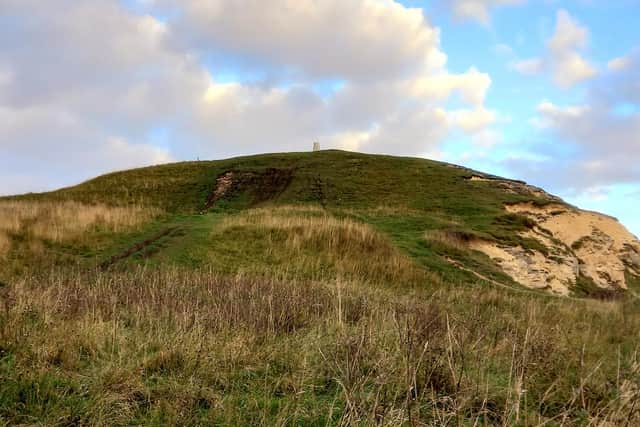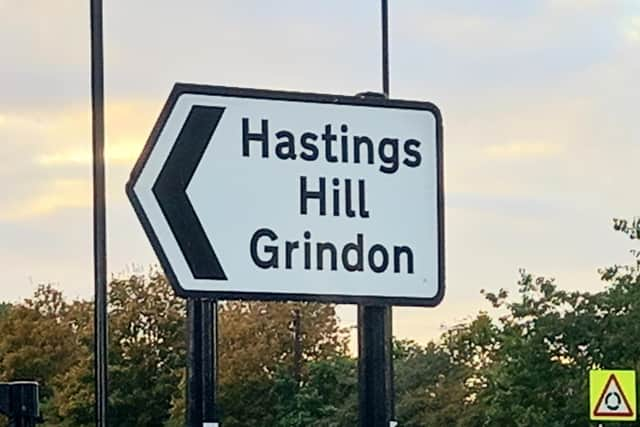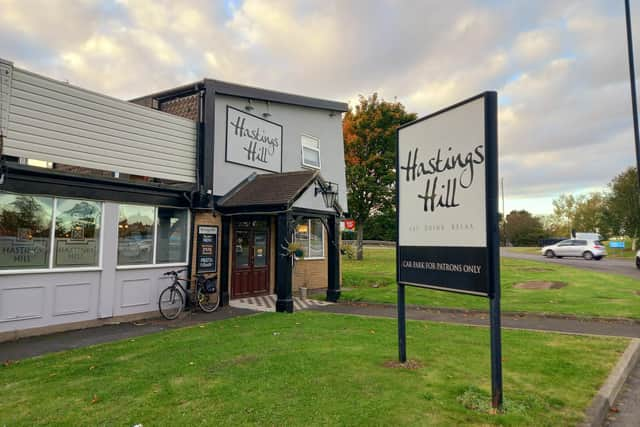The incredible prehistoric tale of Sunderland's Hasting Hill - and that's right, it has no 's'
and live on Freeview channel 276
Tunstall Hills and Penshaw Hill are more conspicuous. Penshaw, about a crow’s mile away from Hasting, has the wonderful tale of the Lambton Worm to cement its place in folklore. The story is of course complete flapdoodle, but somehow that doesn’t seem to matter.
Worm Hill has a fascinating, albeit largely fabricated history. Hasting Hill on the other hand, 116 metres high but obscured by housing and other modernity, barely receives a mention.
Advertisement
Hide AdAdvertisement
Hide AdAs we shall see, it often isn’t even afforded the courtesy of the correct spelling. Yet it is arguably the most historically interesting of the lot, even if it does just sit there minding its own business, largely ignored despite its wealth of history and proximity to the well-used A19.


And we do mean a wealth of history. The magnesian limestone mound has been at least 325 million years in the making; although pretty enough to be worth the wait. It also became an important site for prehistoric man.
The Beaker People
In 1911 local archaeologist Dr CT Trechmann (not a bad name for an archaeologist), was asked by an antiquarian and collector, Rev William Greenwell, to investigate the hill; specifically a round barrow which is a mound of earth covering a burial site.
In 1827 a skeleton had been found, supposedly with hair on its head and Rev Greenwell wanted to find out more. In November 1911 the 40 feet diameter, three feet high barrow was opened. Dr Trenchmann found “a profuse amount of human remains ... along with a large quantity of pottery.”


Advertisement
Hide AdAdvertisement
Hide AdAmong that pottery was a beaker, signifying that the hill, or somewhere very close by, was inhabited by the Beaker People, who formed a civilisation during the Bronze Age in the period around 2400-1500 BC.
The pottery was put into Hasting Hill in 2000 BC-ish. For some perspective, top pharaoh Tutankhamun died in Egypt in about 1323 BC – without a beaker to his name.
The excellent Heritage Herrington website says: “During the four days of digging (in 1911) in rather cold weather, an unusually large number of objects were found: A vessel of a beaker type and at least two other food vessels; snail shells; an urn filled with calcified bones that had been disturbed and crushed at some previous period, and a pick formed from a stag’s antler possibly used in the construction of the site.
“Below was the skeleton of a man of middle age laid on its right side in a strongly contracted position with hands held before the face. He had suffered from rheumatism and a fracture of the ribs.”


Incredible stuff.
Advertisement
Hide AdAdvertisement
Hide AdThe Beaker People were spread across Europe and arrived in Britain in 2500 BC or so. It seems that their story is unable to compete with that of the Lambton Worm, disadvantaged as it is by actually being true.
At the hill, according to Historic England: “Ten burials were found interred in the barrow along with pottery of Neolithic and Bronze Age date, and bone and flint tools.
“The barrow lies about 400 metres north-west of a group of crop marks identified as an interrupted ditch enclosure and cursus, which is believed to be of Neolithic date.”


Artefacts from Hasting Hill are now kept in the British Museum.
Hasting(s) Hill
Advertisement
Hide AdAdvertisement
Hide AdYet despite the undoubted historic worth of Hasting Hill, very few people seem to call it by its correct name. It seems that thousands of years of history were mistakenly binned in the 1960s by the addition of an erroneous, entirely superfluous “s”.
The housing estate built there in that decade was called Hastings Hill, as per the famous 1066 battle which has absolutely zero to do with our story.
What’s more the name Hastings Hill now appears in official council documents, maps, road signs, on the front of the number 16 bus, is the name of the local pub … it’s everywhere.
And they’re all wrong.
We aren’t entirely sure who to blame. Was it some anonymous town planner, who had never set foot in Sunderland, insouciantly scribbling the wrong name on plans while blithely assuming that the rogue “s” belonged there?
Advertisement
Hide AdAdvertisement
Hide AdPerhaps it was someone in the same mould from Vaux Breweries, who built and named the pub there at around the same time, casually ignoring our heritage because they thought Hastings rolled off the tongue better than Hasting.
If whoever made the error was not familiar with the area, then that is understandable. To err is human and all that.
What is more difficult to comprehend is that they were never corrected; either then or in the 50-odd years to roll by since. The mistake has been perpetuated.
Our thanks for much of the information for this article goes once again to Philip Curtis, who is secretary of the Sunderland Antiquarian Society.
Advertisement
Hide AdAdvertisement
Hide AdHe has been a towering support to a number of these features of ours, but this one is particularly close to his heart. You see, he is also the former headteacher of the pointedly, but correctly named Hasting Hill Primary School. He’s also annoyed.
Phil said: “I still keep asking myself if I am alone in noticing this and, more importantly, if it is allowed to carry on, is it just a matter of time before an “s” is added elsewhere? Mills Hill or even Carleys Hill?
“It will always be HASTING to me – rant over.”
For now.
